Generally, young children go out and engage in play activities with their parents looking on nearby. But during these unusal times we are in now, children are restricted to play within the confines of their homes. If this situation persists for several more months, what and how should family members play to be in line with the interests and abilities of children of different ages?
“The first three years of children’s life are considered the golden period of development. Good emotional, behavioral, and developmental guidance will benefit the children in the future,” said Asst. Prof. Dr. Soontharee Taweetanalarp of the Department of Physical Therapy, Faculty of Allied Health Sciences, Chulalongkorn University about the importance of playing with children.

Department of Physical Therapy,
Faculty of Allied Health Sciences
“Playing is natural to children of all ages and is beneficial for the development of their brain, the enhancement of their imagination, learning, sense of touch, sights, and sounds. Age-appropriate play is also a crucial building block for creativity as it helps to connect children’s nerve fibers into a complex network which is vital to growth, communication skills, time management, and people interaction.”
Asst. Prof. Dr. Soontharee recommends how to play with young children at each age range from under 1 year old to 4 years old or older to improve their development as follows:
“Ja-Aey (Peekaboo),” to open up the world of learning to children under 1 year old
For first learners, Asst. Prof. Dr. Soontharee recommends choosing toys with a variety of interesting shapes, sounds, or movements, and toys that promote hand-eye coordination. If it is a book, it should be a cardboard picture book that opens easily to help develop fine motor skills.

Cardboard picture books to develop fine motor skills
Even without toys, parents can easily play with their children in an easy-going game like Peekaboo.
“Playing ‘Peekaboo’ teaches children how to wait, the existence and disappearance of things and people, as well as how to guess what is going to happen. This game is often followed by children’s laughter. Parents can include what’s available in the house in the hide-and-seek game by hiding things under the blanket and letting the children search. This will help stimulate children’s memory,” said Asst. Prof. Dr. Soontharee.

Playing peekaboo with children teaches them how to wait
In addition, for children aged 9-10 months who already start to stand while holding on to something, parents may use a chair or a secure stroller as a support to help them balance and walk.
“One thing that is popular among many parents is a baby walker with wheels that I do not recommend at all. Not only that it does not help your children to walk faster, but it can cause a walking disorder. Children will get used to tiptoeing which results in their leg muscles tightening up, and their Achilles tendon shortened, thus posing walking problems in the future. Moreover, these wheeled walkers may also be dangerous,” Asst. Prof. Dr. Soontharee reiterated.
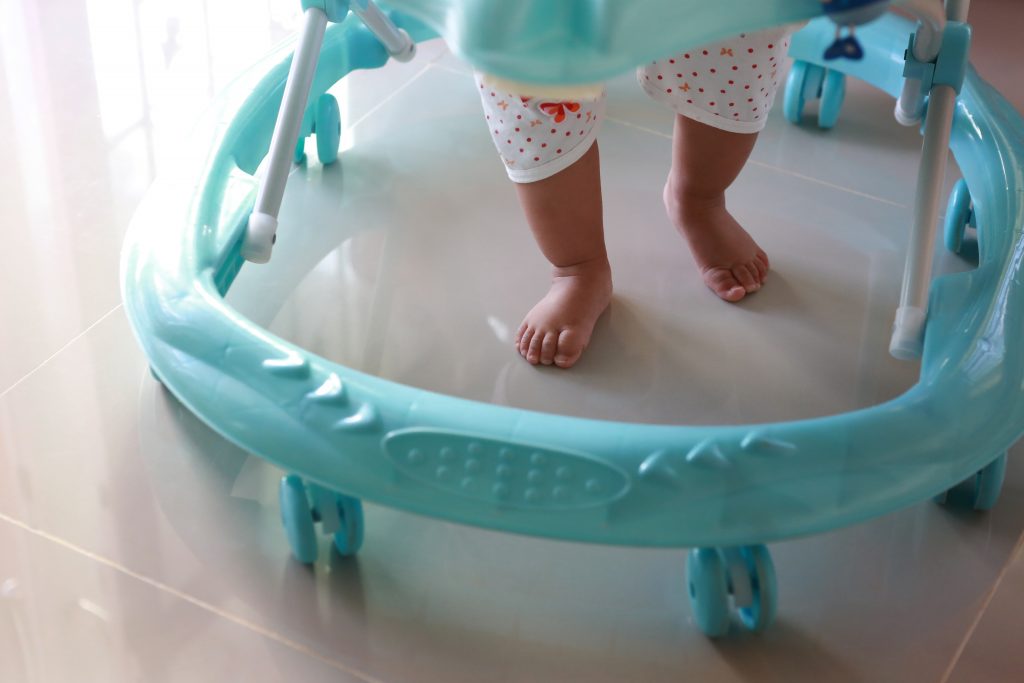
A walker forces a child to tiptoe causing future walking problems
Moving along with 1-2-year-old toddlers
Toddlers are starting to waddle and get a little mischievous at this age. They start dismantling things, climbing, and not staying still. They begin to explore the world around them, which is a learning experience. Toys for this age should be about towing. Parents may add to the fun by making a walkway for their children. It may be a curving or zigzagging path with turns to enhance their balance. In addition, parents can let their children climb on pillows, create a cardboard tunnel for them to move through, and take the children out to run and play on the grass or in the sand.
Asst. Prof. Dr. Soontharee recommends parents to encourage their children to exercise to build their muscles and strength, and to help them to strengthen their fine motor muscles in the hands by prompting them to write and draw with their dominant hand, shape playdough, or hold a spoon which also helps them to enhance their hand-eye coordination, brain functions, and motor skills.
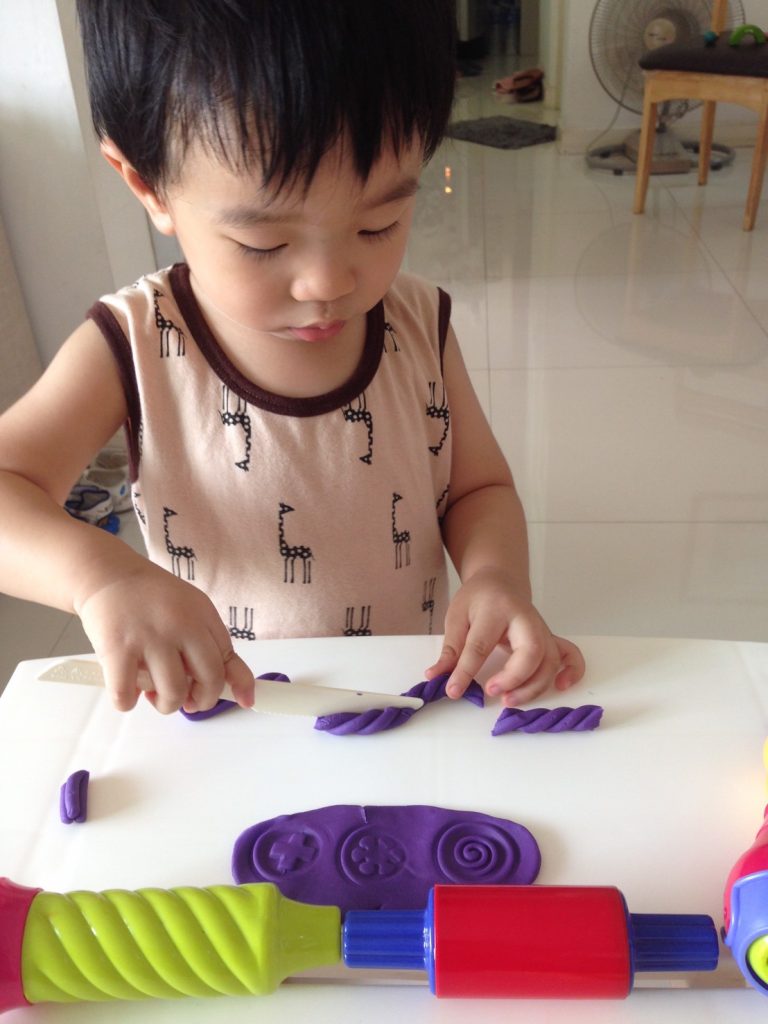
Sculpting playdough helps to enhance hand-eye coordination skills
For toddlers at this age, play and activities with the family are essential for their language and communication development. Apart from reading aloud from picture storybooks, singing together with rhythmic gestures also contributes to the development of children’s learning. When children have questions during the activities, parents should seize the opportunity to heighten their curiosity through explanations and storytelling in a fun and engaging tone.
Asst. Prof. Dr. Soontharee emphasized that “even though toddlers of this age are not that keen on talking yet, but this kind of play will stimulate their speech development and enhance their reading ability.”
Energetic activities for 2-3-year-olds
Children at this age are the most restless. They are more confident in their movements due to the readiness of their muscles and much better balance. So, their toys should be energy-intensive, such as a tricycle, a bicycle, a soccer ball for kicking, a jump rope, or a basketball for throwing.
“Energetic play encourages exercise. Particularly during the time that everyone is stuck at home, we must work on stimulation to prevent children from obesity. Physical activities such as throwing and passing a ball, crawling with things on their back, dancing to the music may be added. Besides preventing child obesity, these activities can also draw the children away from the TV or computer screens or games,” said Asst. Prof. Dr. Soontharee.
Besides energetic play, allowing children of this age to draw and write on the wall or large pieces of paper, and attach stickers at various places is also essential for 2-3-year-olds, as their finger and hand muscles require just as much stimulation as their imagination. Beadwork that requires precise eyes and fingers coordination is another great home activity that is suitable for them.
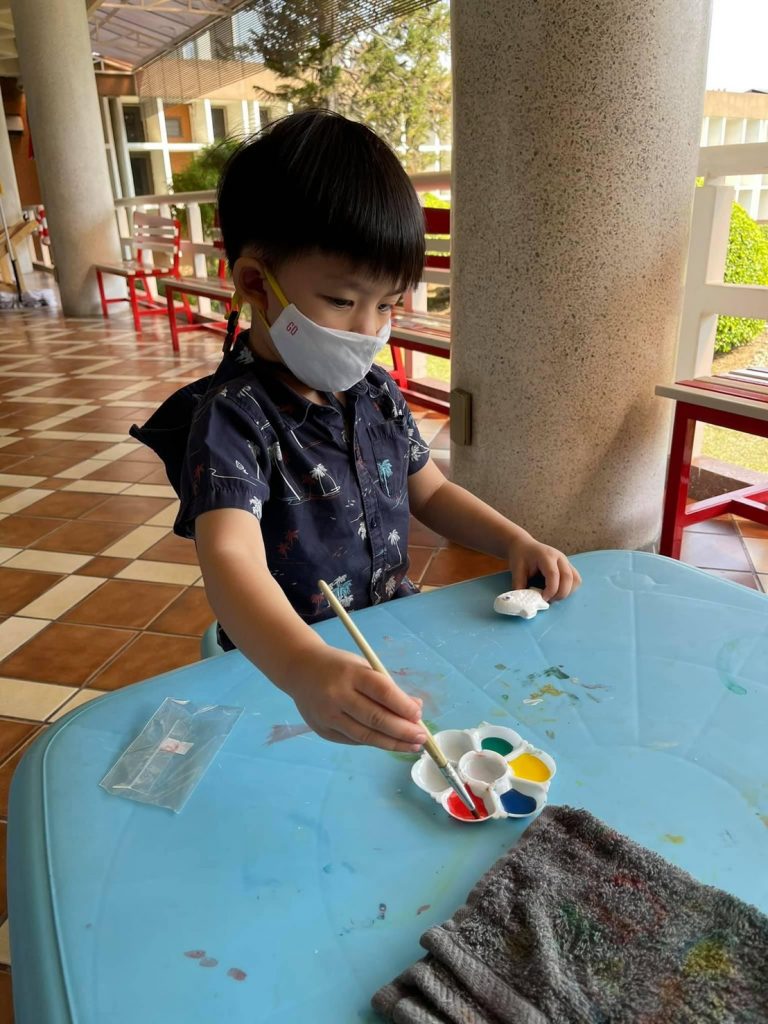
Drawing stimulates muscles and imagination
Role-playing for 3-4-year-olds
The play that is appropriate for this age is roleplaying to stimulate the children’s imagination through the given roles. This can help them practice their communicating skills with others.
“Jigsaw puzzles or Lego” is also suitable for this age group. It helps them to practice solving immediate problems and stimulate creativity. In addition, play activities related to light and shadow, be it with sunlight, or torchlight, also help strengthen science-related skills like observation, telling distance, position, and size of the shadows.
Children at this age are already starting to do some simple household chores. Parents may start asking their children to help with household chores to practice sharing family responsibilities, such as watering the plants, sorting clothes before washing, hang drying and putting clothes away, and easy baking.
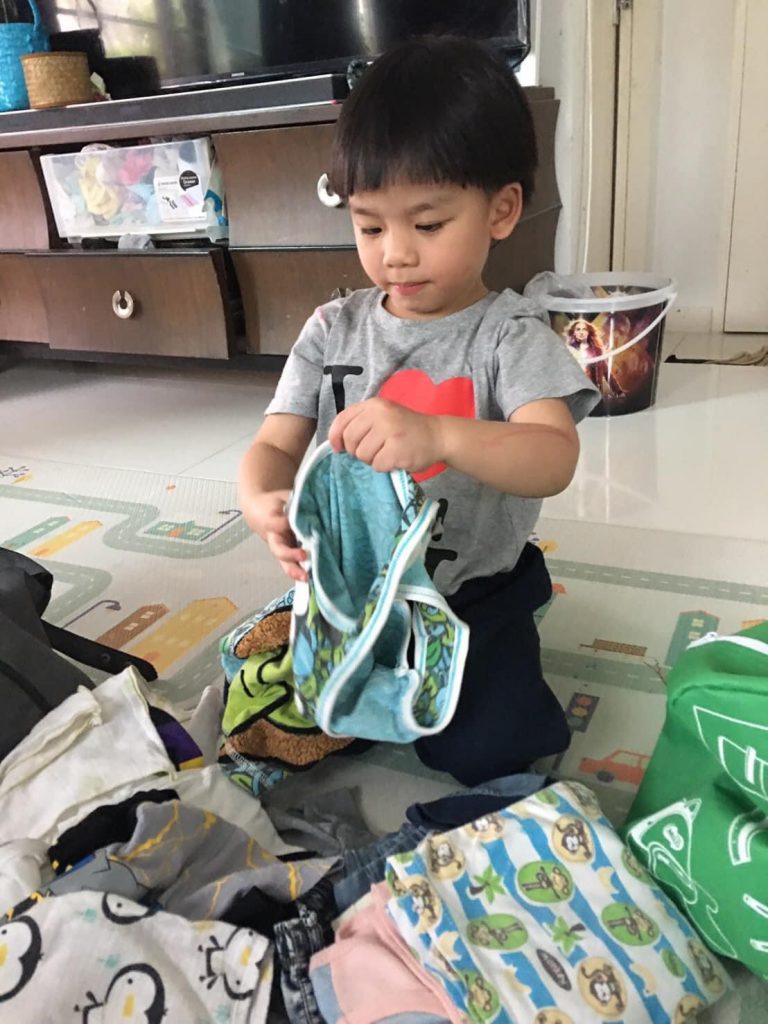
Helping with the household chores teaches children about responsibility
Play activities to prepare children for school – 4 years and older
Children at this age start to go to school. Parents may arrange playtime in line with the school schedule, like morning to noon as learning time, with breaks in between learning activities, lunch breaks, and afternoon naps. The afternoon can be time for recreation with a handicraft group of activities. This framework should be used to plan in-home activities to teach children about time management for various activities — when to study, when to do crafts, when to rest, when to play, and most importantly, when to play outdoor activities especially exercises that focus on burning energy.
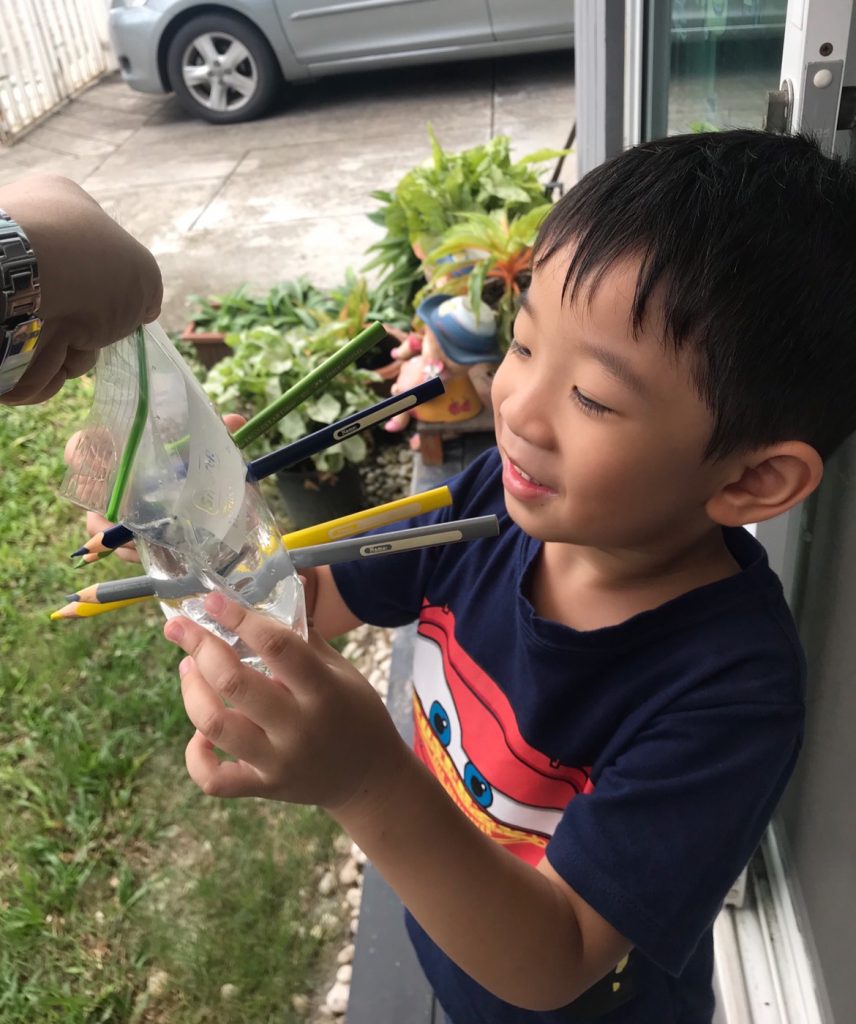
Allocating time for activities teaches children time management
“Playing is beneficial for children, but time management is also important. Parents should teach their children how to wait, how to allocate time like the time when parents spend time with them, and when parents work. They should also be taught about interactions with people of different ages in case they need to stay with their elderly relatives when parents are busy,” Asst. Prof. Dr. Soontharee concluded.
Whatever age are the children and no matter how long the COVID-19 will be with us, these simple activities at home recommended by Asst. Prof. Dr. Soontharee should be done regularly for the development of children and also strengthen the family relationship which is the cornerstone of life.



